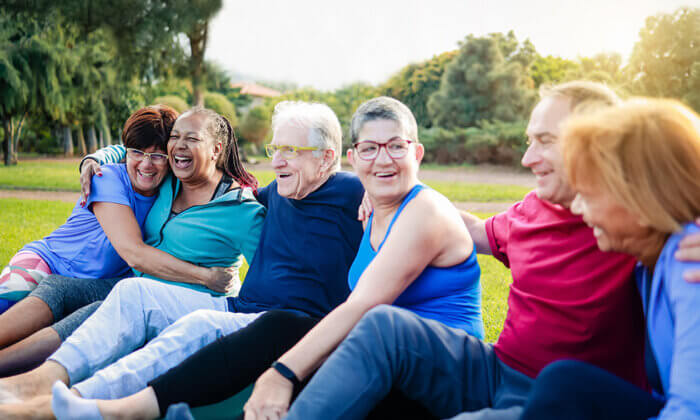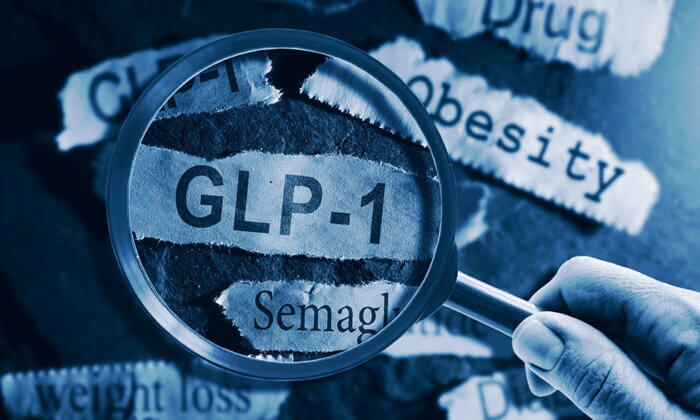How to Bounce Back Quicker and Heal Faster
The sooner we recover from difficulties, the better we fare in life, and the happier and healthier we are.
| | Reading Time: 7 minutes

Timothy D. Wilson, a professor of psychology at the University of Virginia, wrote in Redirect: Changing the Stories We Live By (Wilson 2015) that the more we understand the negative events that take over our lives, including “breakups, failures, and medical problems, the faster we recover from them.”
It seems that bouncing back is an inborn trait for healthy living. If we can activate it, we might be happier in adversity and healthier in sickness.
My mentor and founder of Good Earth Restaurants, William A. Galt, described it to me this way: “People are like corks. The deeper they get pushed under water, the higher they pop up out of the water.”
Most of the time, putting a positive spin on things works to our advantage. But, there’s more to it than we’re led to believe by popular marketplace books and seminars. It seems that bouncing back takes practice. Just like training for a marathon or practicing the piano, you have to work at it daily.
Our Personal Story Matters
Most people are adept at making the best out of the worst news and finding the silver lining in difficult circumstances. I realize that some spin good information into negative news, but to heal yourself—or a nation—positive, useful information is required. Some of us are proficient at inventing stories that make us laugh or cry, and some tell stories that heal.
In 1976, an improbable medical discovery unleashed a new, free drug: laughter. Normal Cousins explained how he stumbled onto the biochemistry of healing emotions in the bestselling book, Anatomy of an Illness (Cousins, 1981).
It’s not that laughter is all there is to healing. Far from it. But, reframing how a patient views his illness is half the battle to recovery. In the face of catastrophic misfortune like incurable illness, Cousins held that “the human body experiences a powerful gravitational pull in the direction of hope.”
The way to hope is by taking time to re-create your personal narrative.
“The human body experiences a powerful gravitational pull in the direction of hope.”
Changing Your Personal Narrative
When a patient comes to see me, of course I want to know what’s medically wrong. In order to help, I need to know where the pain is, what treatments she has had and which ones have failed. In a way, medicine can be a negative profession where the fight against disease never seems to end. I find that it’s a must to start by defining the patient’s disease, but it’s not healthy to stay there. Moving toward hope is a powerful direction for both patient and doctor. By the end of the first visit, I want my patients to feel confident in what I can do for them and how I can help. I want them to feel hopeful.
Next, I outline a starting point, set clinical targets and goals, recommend lifestyle changes, and then prescribe treatments. In this way, I offer my patients a new approach to their illness. I provide an actionable, manageable plan; monitor regularly to evaluate progress; and have a “plan B,” should the first course of therapy not be effective enough.
You can do the same for yourself.
Creating Your Restorative Process
Can we consciously create a protective setting that lends to a healing dialogue, which fosters a process of restoration and healing?
The healing, human factors that significantly improve disease outcomes include healing words, a pleasant environment, and the support of family and friends. Positive attitude and feelings result in better outcomes.
The ancient Greeks, in the temples of Asclepius, operated with this same philosophy.
As did the ancient Chinese in the I Ching, the Book of Changes, describing the interchange of all things in life. They identified two fundamental processes and termed them “yin” and “yang.” According to traditional Chinese doctors, restoring intrinsic balance is the key to healing, and the process is a positive one.

So why haven’t more Americans adopted this ethos of positivity? I believe it is because the American mythos is made of winners and losers. Winners take all. Losers get nothing. The delusion is that winners don’t get sick, when in fact they do every day.
This takes us to another strange place: where the extraordinary becomes commonplace. It happens during wartime and impoverished areas, where violence, crime, drugs, and murder are daily events, and when ordinary people rise up and become heroes.
The exception is the opposite. When ordinary life becomes a venue for the extraordinary, we are in the company of saints. Zen masters extol the hidden spirituality in daily tasks like chopping firewood or carrying water from the well to cook the evening vegetables. We can learn from this method how to incrementally heal.
Setting Your Self Up to Heal
Medical doctors hold that the placebo effect is anything that seems like a real medical treatment, but isn’t. A placebo pill doesn’t contain a pharmacologically active substance, but heals the patient anyway. The surprising fact is that the placebo is often more effective than the drug.
Technically speaking, Cousins’ laughter therapy was not a placebo. But, like a placebo pill used in research, it produced a healing response. It seems that healing starts in the brain and nervous system.
Learning about health sets up your brain to heal. However, be skeptical about self-styled experts on the Internet and self-help books that praise the easy road to wellness or weight loss and that make too-good-to-be-true claims about the laws of the universe or instant healing. Challenge such assertions with a question to the author: What’s your proof that it works?
Five Ways to Promote Healing:
- Start a journal. Take notes of your thoughts, feelings, what you read, dreams, travels, and doctor visits.
- Get inspired. Read inspiring books and articles.
- Practice affirmations. Positive thinking requires mental affirmations.
- Have a simple plan. Make a list of what you need to do today to get better. Keep it simple. When you have a chronic disease, managing five items is possible but ten is too many.
- Do something positive every day. Developing healthy emotional intelligence helps, but action steps make it happen in real time.
The Proactive Patient Heals Faster
Investing in preventative daily practices that sustain health now can save money in the future. A European study found that kindness can change white blood-cell genetic expression for the better. White cells like T-lymphocytes play key roles in fighting viral infection and snuffing out cancer. Mediating genetic pathways for the better may have a positive influence on disease development and outcome (Nelson-Coffey et al. 2017).
A Good Doctor Is Hard to Find
Finding a good doctor is not easy. You’ll at least want one who is technically competent. Some are more competent than others. Some are brilliant at what they do, but are not healers. Most doctors have guarded ideas about health and rational convictions about disease as taught in medical schools and endorsed by medical societies. Often, science proves these convictions wrong. A good doctor is flexible and doesn’t take himself and his ideas too seriously.
A few medical doctors go out on a limb in the search for safer and more effective treatments for their patients. In his book, “The End of Illness” (Agus 2011), Dr. David Agus, MD, confessed that the American healthcare community had gotten it all wrong.
The model of a single illness, a definitive cause, and a targeted cure by way of a pharmaceutical drug is a kind of professional shortsightedness. The human body is a biological organism, the creation of millions of years of evolution. Biology is complex. So are most diseases. That’s why even well trained doctors don’t get it always right. Some choose a wiser way.
“Sometimes the best medicine is none at all.”
Dr. Judy Goldstein, MD, among my first mentors, took time from her busy hospital schedule to guide my clinical development. Over many lunches—often at our favorite Vietnamese restaurant on Convoy Street in San Diego—I would present cases comprising carefully thought-out histories and then submit my failure to help these patients. I wanted to discover better strategies and treatments.
At one of our lunch meetings, I shared a particularly difficult case. It seemed that no matter what treatment the patient had tried, nothing worked. I was the most recent in a long line of doctors, and I was at a loss of what to do next.
As always, she listened quietly, never interrupting, then proposed a radical treatment: “Sometimes the best medicine is none at all,” she said.
Judy came from a long line of medical doctors. I could only imagine what she picked up from her father, a wise and respected Boston physician, tagging along behind him in the hospital, watching him at a patient’s bedside, calling him for advice when she first started practicing on her own in Berkeley, California. She intuitively understood that the interaction between a doctor and patient is fundamental in the healing response. Empathy, caring words, and facilitating coping skills help patients deal with their suffering in a positive manner and improve outcomes. A wise doctor relies on intuition. Sometimes, her intuition prescribes a few days away from work, a late movie, a meditation retreat, a complete break from medicines.
Integrative holistic practices contribute to feelings of self-sufficiency, a positive body image, and mind-body-spiritual wellness. Access to holistic resources should be available to everyone. Some traditional hospital and medical schools are investing in this model, including Duke University, Cleveland Clinic, and The Functional Medicine Institute.
Mind-Body Medicine
In 1990, I was enthralled when I first heard Margaret Kemeny, PhD, of the University of California San Francisco, lecture on the complex interrelationship between the mind, brain, and immune system, and how it affects our health. Psychoneuroimmunology was the first field to seriously take into account how people heal without pills, or even with the wrong pills.
Dr. Kemeny developed her observations into a theory of a “bidirectional network of interactions” linking the immune system, the nervous system, and our hormones. Stress disrupts this finely tuned network and allows for disease. But by reshaping our psychological response, by creating a story about our journey from disease to health is true self-healing. (Kemeny 2009)
Your health is not only your responsibility. We need to also consider the health of those we care for, those who care for us, the health of our communities, and the rights to health of people from across the globe. We need to consider the health of our rivers, air, and the fields where we grow our foods. Healthy people make for a stable society.
But, it is up to each of us to value, protect, preserve, and cultivate health to higher levels. Each of us has a remarkable gift: our self-potential. No one else can actualize you, like you can do for yourself. No guru, no doctor, no team of doctors, no self-help expert, no institution can do it for you. Experts can help, but you still have to do the work. Your body does the healing. And when you get your health back, don’t let it slip away again. Even the fight for social justice and positive political change is more difficult if you are not healthy as your body. Health starts at the center – you.


